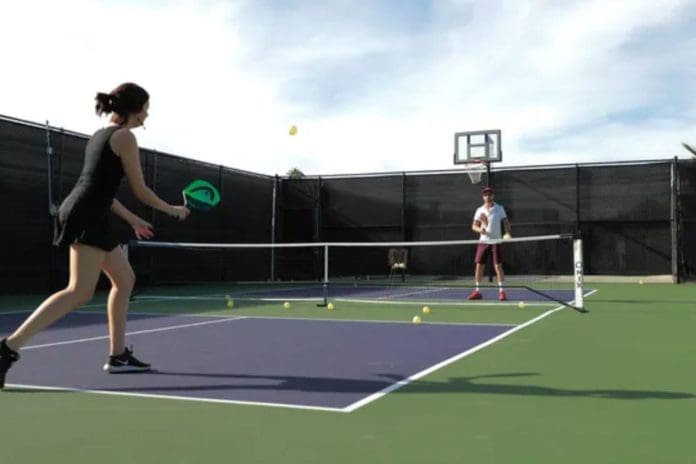Morgan Evans On Offense to Defense Transition: In the world of pickleball, the age-old adage that “the best defense is a good offense” may not always hold true. While offensive skills are crucial for scoring points, a well-rounded player or team understands the pivotal moments when they must shift gears from attacking to defending.
Court Positioning and Its Significance
Morgan Evans emphasizes that your positioning on the court with your partner serves as the compass for your gameplay strategy. When you’re serving, the immediate goal is to advance to the kitchen line, setting up for a strong offensive stance. However, the dynamics change once the rally progresses. If you find yourself or your partner pulled out of position—creating a gap that opponents can exploit—it’s a clear signal to prioritize defense. Quick lateral movements to cover vulnerabilities become paramount in these instances.
Navigating the “Divorce Ball”
According to Evans, a miscommunication or a sudden clash in the middle of the court often leads to a breakdown in defensive coverage. This scenario demands swift adjustments to avoid leaving open spaces for your opponents. Retreating strategically to cover wide-angle shots or resetting the rally with a controlled return can neutralize the threat and regain defensive composure.
Dealing with the Perfect Lob
An effective lob from your opponents can abruptly shift your team from offense to defense. Evans advises that this is not the time for risky plays or ambitious shots down the middle. Instead, prioritize stability and regain court position by returning the ball with a controlled drop shot, aiming to regain control of the point rather than attempting a high-risk offensive maneuver.
Maintaining Balance and Position
In pickleball, being off balance can spell disaster. Evans stresses that whether due to a challenging return or a sudden shift in momentum, regaining stability is crucial. Opting for a low volley or half volley to stabilize your position and frustrate your opponents’ offensive rhythm is often the wisest course of action.
Height of Contact and Defensive Awareness
Evans emphasizes that the height at which the ball is contacted by both your team and your opponents provides critical cues for defensive readiness. For instance, facing an overhead smash requires a quick backward split step to defend effectively and regain control. Similarly, reacting to a high dink demands immediate adjustments to prevent your opponents from capitalizing on a potential offensive opportunity.
The Art of Defensive Anticipation
Anticipating defensive situations involves keen court awareness and proactive decision-making, according to Evans. Recognizing when to retreat from the kitchen line or adjust your positioning based on the ball’s trajectory are skills that separate competent players from exceptional ones. These decisions not only mitigate risk but also set the stage for strategic counterattacks.
Understanding the subtle shifts from offense to defense is essential for mastering pickleball, as outlined by Morgan Evans. By honing your court positioning, maintaining balance under pressure, and reacting to the height of contact, you can elevate your game to anticipate and effectively respond to defensive challenges. Remember, in pickleball, the ability to seamlessly transition between offense and defense can often be the difference between victory and defeat.
News in Brief: Morgan Evans On Offense to Defense Transition
Morgan Evans, a prominent figure in pickleball, shows the importance of transitioning between offense and defense seamlessly. Court positioning guides strategy: advancing to the kitchen line for offense but adjusting defensively if pulled out of position. Managing “divorce balls” and handling lobs effectively shifts focus from attack to defense. Stability is key; returning with controlled shots maintains court balance. Height of contact dictates defensive readiness; anticipating opponents’ moves through proactive positioning and decision-making ensures strategic counterplay. Mastering these details is crucial for competitive success in pickleball, where fluid transitions between offensive aggression and defensive resilience define skilled gameplay.
ALSO READ: The Biggest Pickleball Tournaments in the US: Insights


